When I was a kid, photography wasn’t something I was really into. I had a Kodak 110 camera that I took snapshots with, but that was pretty much it. That was, however, until I discovered my big brother’s Nikon EM camera. I began experimenting, not really knowing what I was doing, trying to create something worth looking at.
I didn’t understand aperture or shutter speed, and ASA/ISO was a mystery (“just set it to what’s on the film box”). But I was getting decent images and it was fun to use.
Many years (and many cameras) later, the Nikon EM remains a favorite. Andy’s EM is long gone; I’ve since been through two of them on my own. But thanks to those positive early experiences, I’ve been an EM fan – and more importantly for a certain Japanese company – a solid Nikon shooter ever since.
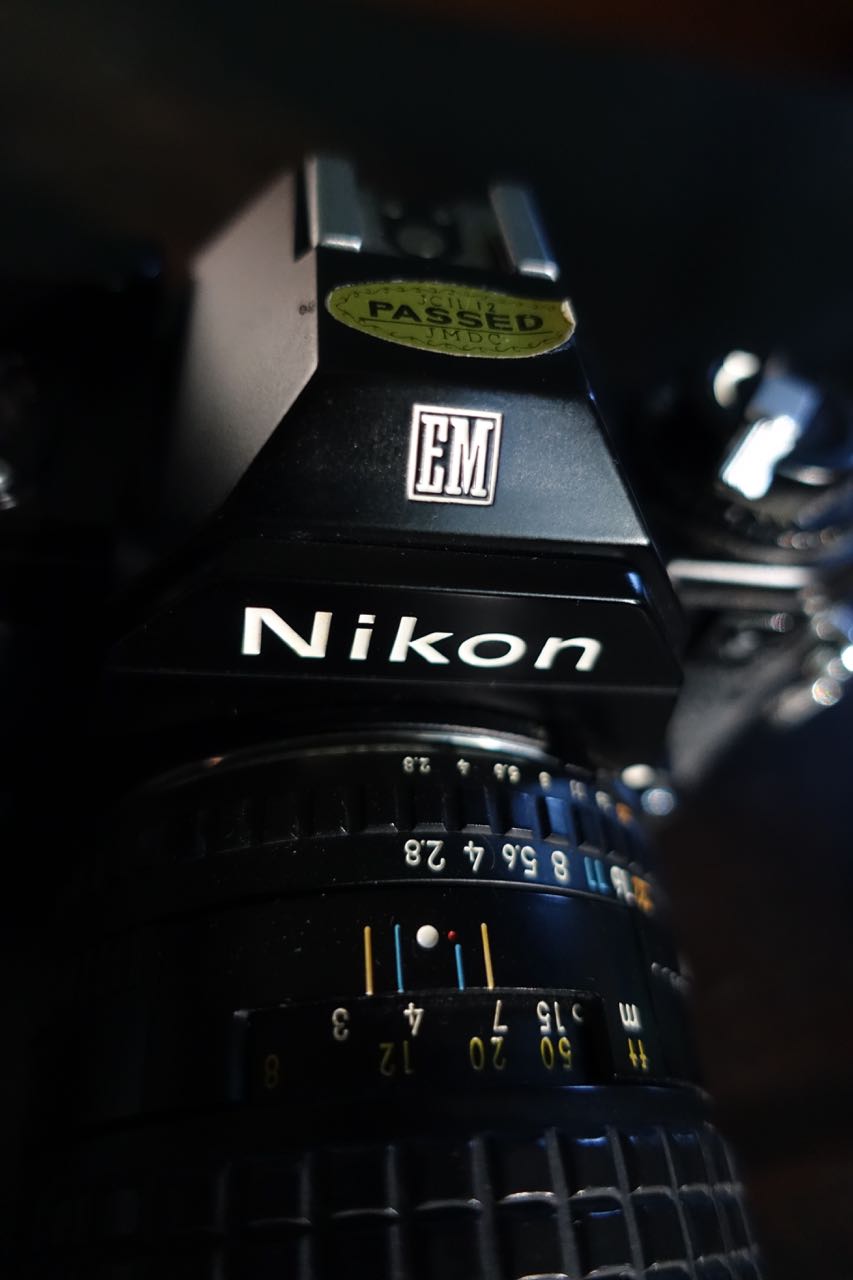
The EM is Nikon’s smallest, simplest SLR. Introduced in 1979 during the height of the SLR craze, it was positioned as an entry into the Nikon system that was easy to use and (relatively) inexpensive. At the time, Nikon offered the FE/FM duo and the F3 – all mighty cameras that pros swore by, but expensive and a little daunting to beginning photographers.
Ad copy from the day read, “The Nikon EM offers legendary Nikon picture quality for less than ever – with precision qualities unique among ultra-compacts. Every inch a Nikon, from its metal body casting and shutter to silver-coated prism to gold motor contacts, the Nikon EM uses the same Nikon system optics as all other Nikon slr’s. Its aperture-priority automation assures electronically-accurate speeds from 1/1000th to 1 second. And with its pocked size auto-thyristor flash, motor drive and superb Nikon-system lenses, it’s a camera of vast versatility. The perfect, low-cost way to begin – or expand your personal Nikon system!”
What is the EM?
The EM is an aperture-priority automatic 35mm SLR. The user sets the aperture and the camera calculates the proper shutter speed. The EM doesn’t have a shutter speed knob, nor really any way to set the shutter speed. There’s an M90 setting that sets the shutter at 1/90 of a second (which was also it’s flash sync speed) and a Bulb setting, but that’s pretty much it. As an electronic camera, it requires batteries; however, if the batteries go dead, the user can still shoot at 1/90 of a second. Neat!
Many advanced users poo-poohed the EM given its lack of manual controls, but for a beginning user, the aperture-priority nature of the camera proved an excellent way to get into photography. When you set the aperture with the lens ring, the meter needle on the left of the viewfinder indicates what shutter speed the camera will select. If the shutter speed needed was greater than 1/1000th, the needle would pin in the red on the top of the scale and the camera would beep; the user then need to select a smaller aperture. The beep also came in on the lower end of the scale too; if the indicated shutter speed was lower than 1/30th, the camera would beep alerting the user to open the aperture a bit or possibly use a tripod to avoid camera shake. Simple.
For me, this was the best way to learn, and it has impacted how I shoot to this very day—aperture priority is still my preferred shooting style. Depth of field is usually the creative aspect I want control of when I’m shooting. And since my higher end shooting is aperture-priority, this “shortcoming” of the EM never really bothered me. In fact, it’s a little freeing, allowing me to focus on the composition and focus while still having control over the aspect that’s most important to me.
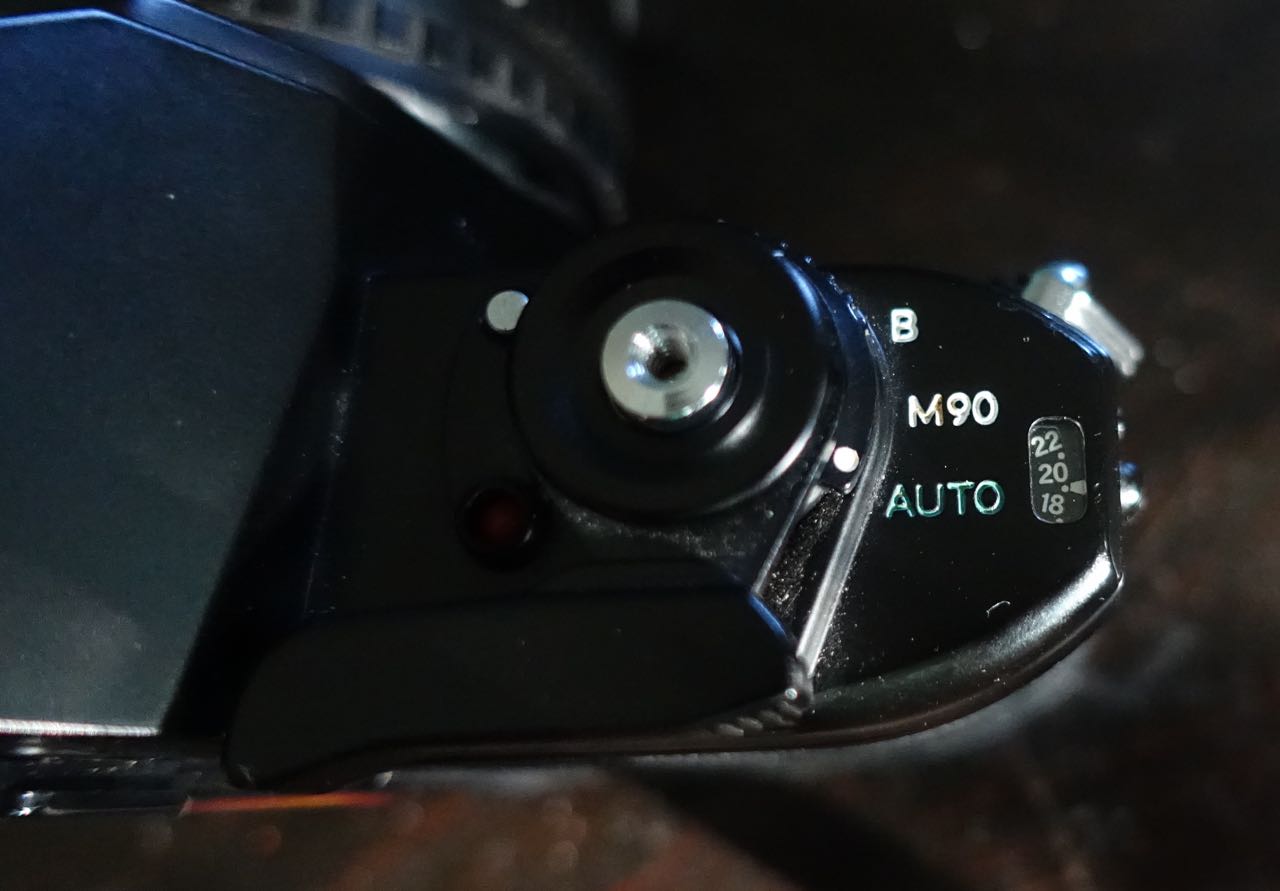
The viewfinder on the EM is wonderfully bright; the Nikon focus screen (non-replaceable) offers both microprism and split-range finder focusing aids, making this camera a breeze to focus in many lighting conditions. The viewfinder is also uncluttered, with only the shutter speed meter needle on the left. As an eyeglass wearer, I do wish it had a higher eyepoint, but I still do okay.
The camera uses two 1.5-volt S76/LR44-type batteries to power the meter and the shutter. As I mentioned before, if the batteries die while you’re out shooting, the shutter will still operate at 1/90 of a second. You’ll need to do some calculating on your own (Sunny 16, anyone?) but you can still shoot until you can get to the store. To check battery life, there’s a button on the top next to the film advance; press it and an LED lights to let you know all’s good.
The EM has a center-weighted meter that does a remarkable job of nailing exposure. The meter is activated with a half-press of the shutter button (I still meter this way on almost all of my cameras) and unlike other Nikons of the day, the film advance lever doesn’t need to be in the “out” position to start the meter, keeping it out of the way; as a left-eyed photographer, not having a lever poke me in the eye is a plus.
Since it was introduced in 1979, the EM doesn’t have automatic DX coding; you need to set the ASA/ISO on the dial around the film rewind knob. The EM can use film from 25 to 1600 ISO.
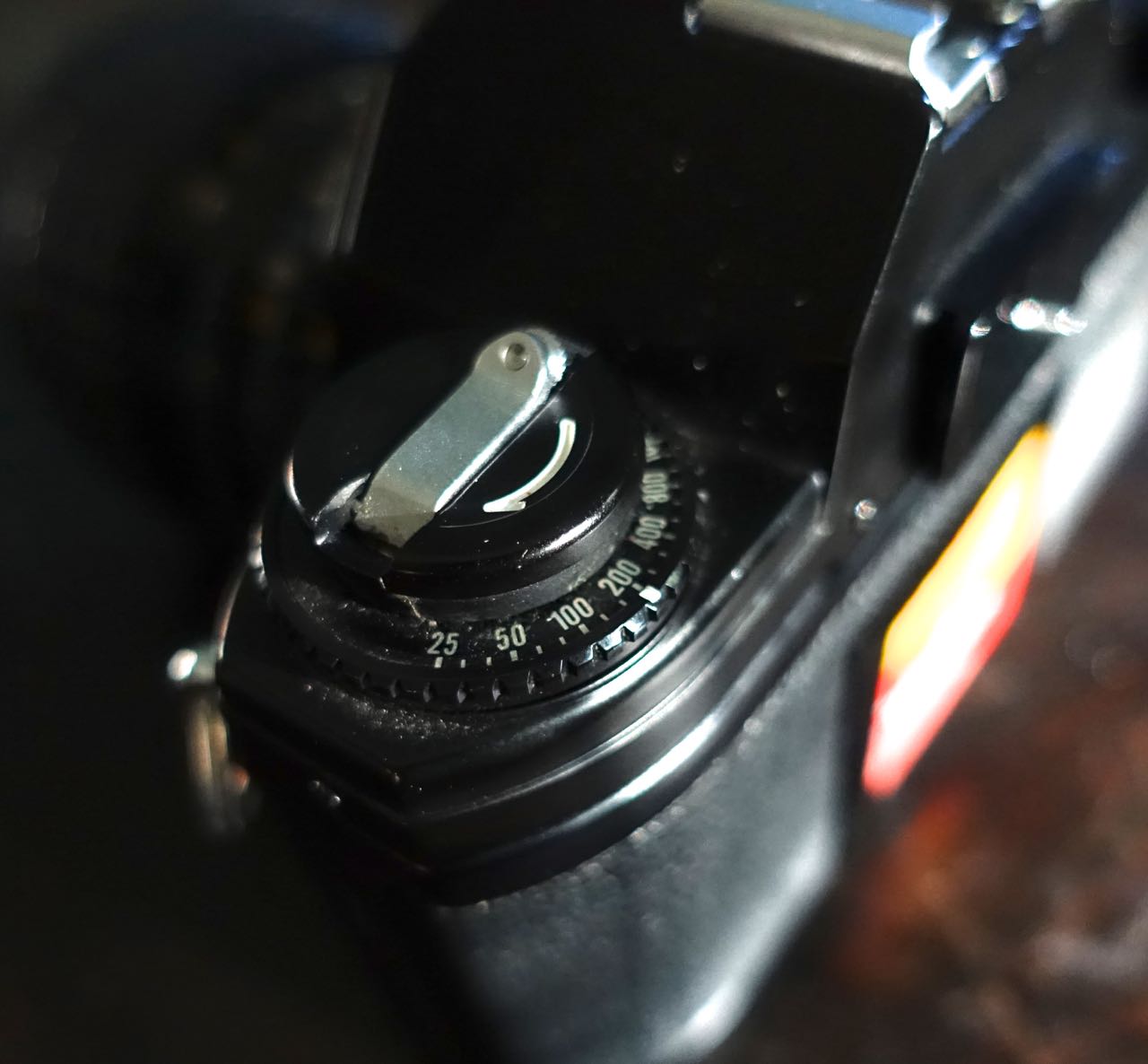
While automatic, the EM has several ways that you can set exposure compensation. First, the camera has a small silver button (it was blue on the earlier versions) on the front right below the ASA setting dial; push it, and the camera will overexpose by two stops, perfect for backlit situations. In addition, since the ASA is set manually, you can reset the ASA dial to a lower number for + and a higher number for – exposure compensation. For example, if you’re shooting with 400-speed film and you want to overexpose by one stop, simply set the ASA knob to 200 for that shot; two stops, 100; and so on. To underexpose, set to 800 for one stop, 1600 for two stops. Just remember to reset it to the box speed when you’re done, or everything from there on out will be at the wrong exposure!
When the EM was introduced, it was joined by a new line of less-expensive lenses called E Series lenses. They had a lower build quality than the typical Nikkors of the day, but they were still produced by Nikon, used Nikon glass and in many cases were optically just as good as their Nikkor counterparts. There were several Series E lenses that proved to be remarkable in their quality, including the 100mm f2.8 (a fave of mine), and the 75-150 f3.5, a stunning piece of glass. My EM usually wears a Series E 50mm (they made two million of them!) which focuses very smoothly, has a snappy aperture, looks sharp and takes wonderful photos. And while they were looked down upon by the Nikon congnoscenti of the day, they feel far more sturdy and well built than the Nikon’s consumer-grade lenses of today. Series E lenses also included a 28 f2.8, a 35 f2.5, a 135 f3.5, a 36-72 f3.5 and a 70-210 f4. (include shot from Series E page) They were offered through 1985, and were what many an EM, FG or FG20 shooter would opt for when they made their purchases. The EM also had a dedicated motor drive that could do two frames a second!
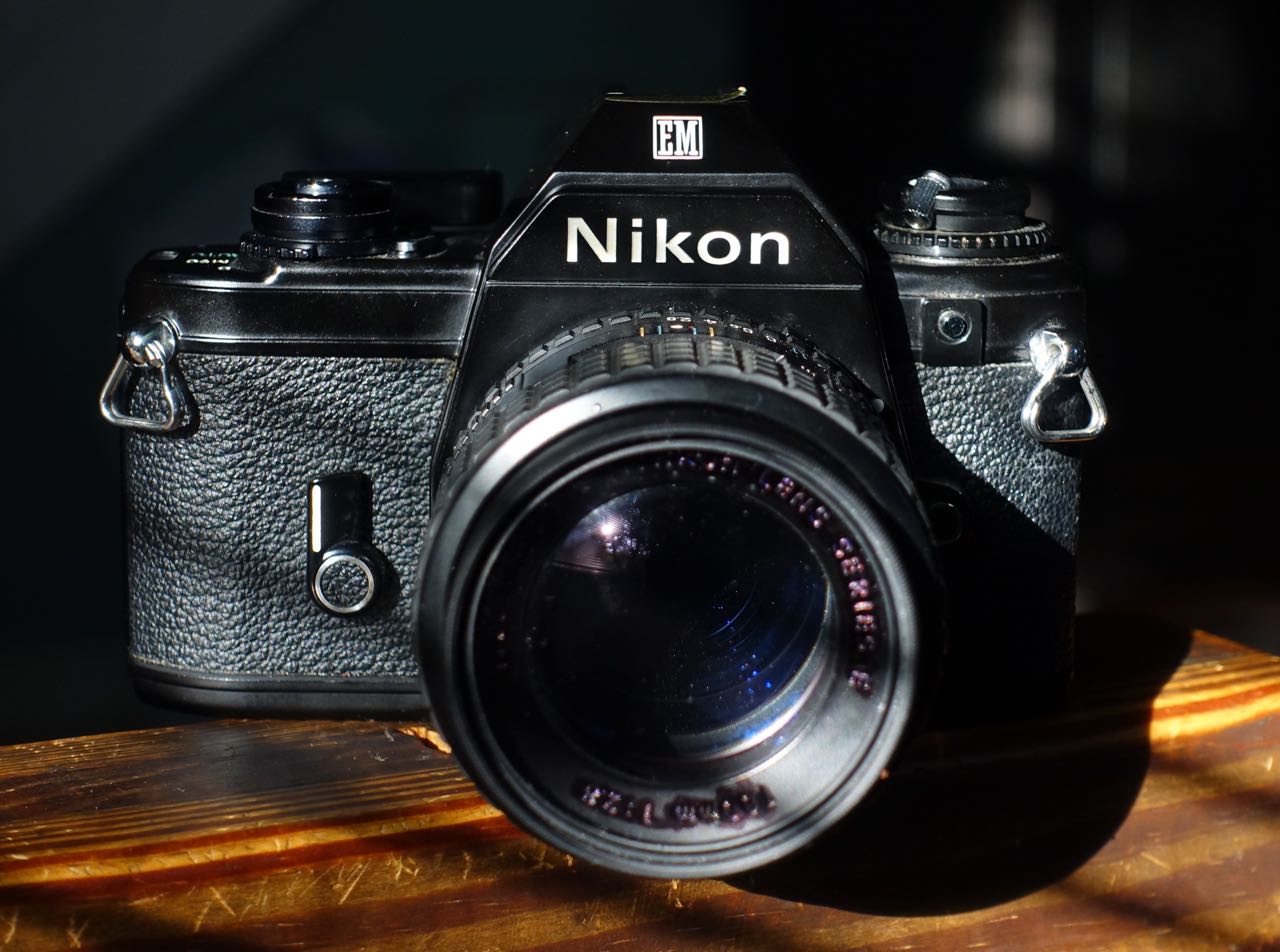
If you’re looking to get in 35mm photography, the EM would be a fun place to start. While for just a little more you can get an FG or even a bargain basement FE, the EM is still a good option. Pair it with a Series E 50 or maybe a 28mm f2.8 and you’ve got a good start. In fact, I’d recommend this combo over one of the compact point-and-shoots that seem to be the rage today – it’s cheaper and way more flexible yet still almost as easy to use. (Not to disparage point and shoots – I have several of them including a Nikon L35AF and a Canonet QL17 G-III which I’ll get to later…)
EM’s are easy to find; the big used vendors (KEH, Used Photo Pro, National Camera Exchange etc.) always seem to have some on hand, there’s a ton of them on EBay, plus you might find one at your local camera shop or flea market. If you’re just getting started, it might be worth the few extra bucks that a KEH or Roberts charge to get a warranty, knowing you’re going to get a working camera. 50mm f1.8’s, especially the Series E varieties, tend to be the cheapest lenses at these places, too.
As with any camera of this age, if you’re looking at getting one, be sure to check the light seals (although they are pretty easy to fix), look for corrosion in the battery chamber and check that the meter responds to different light sources and that the shutter speeds sound right. One of mine recently developed an issue where every shutter speed sounds the same, indicating that there’s a disconnect between the meter and the shutter mechanism; the meter needle moves as it should, but the shutter speeds all sound the same.
And that’s another great thing about the EM…while that one wasn’t working any more, I just went ad picked up another one from Used Photo Pro for $28 in great condition and with a 180-day warranty. Love it.
I still love shooting the EM. It’s light and easy to carry, is fun to use and rarely lets me down. It can use almost every lens Nikon made from 1977 to 2002. The exceptions? Mounting non-AI lenses can break the camera, and and today’s G-lenses without aperture rings are pretty useless. It’s fun to mount a monster like the Nikon 80-200 f4 manual focus and get great stuff, or the teeny-tiny Series E 50mm when I want something really portable.
When I need to “go back to the beginning,” the EM is what I reach for. I typically load it up with consumer-grade color print like Fuji Superia 400 or Kodak Color Plus 200 or a roll of 400 TMax if I’m in a black & white mood. It’s a satisfying shooter, and I’m not that worried if something happens to it (I’m more concerned about the lenses I mount to it that I am for the camera itself!

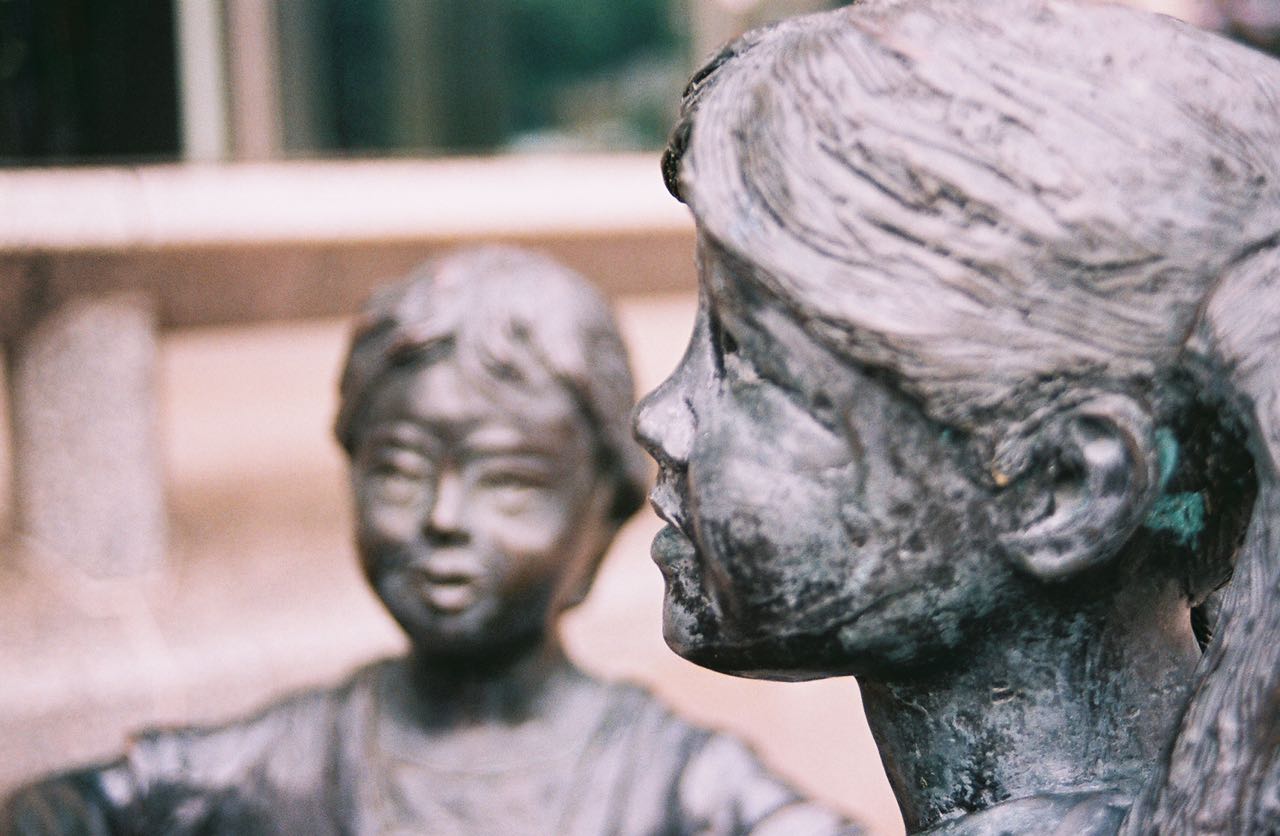
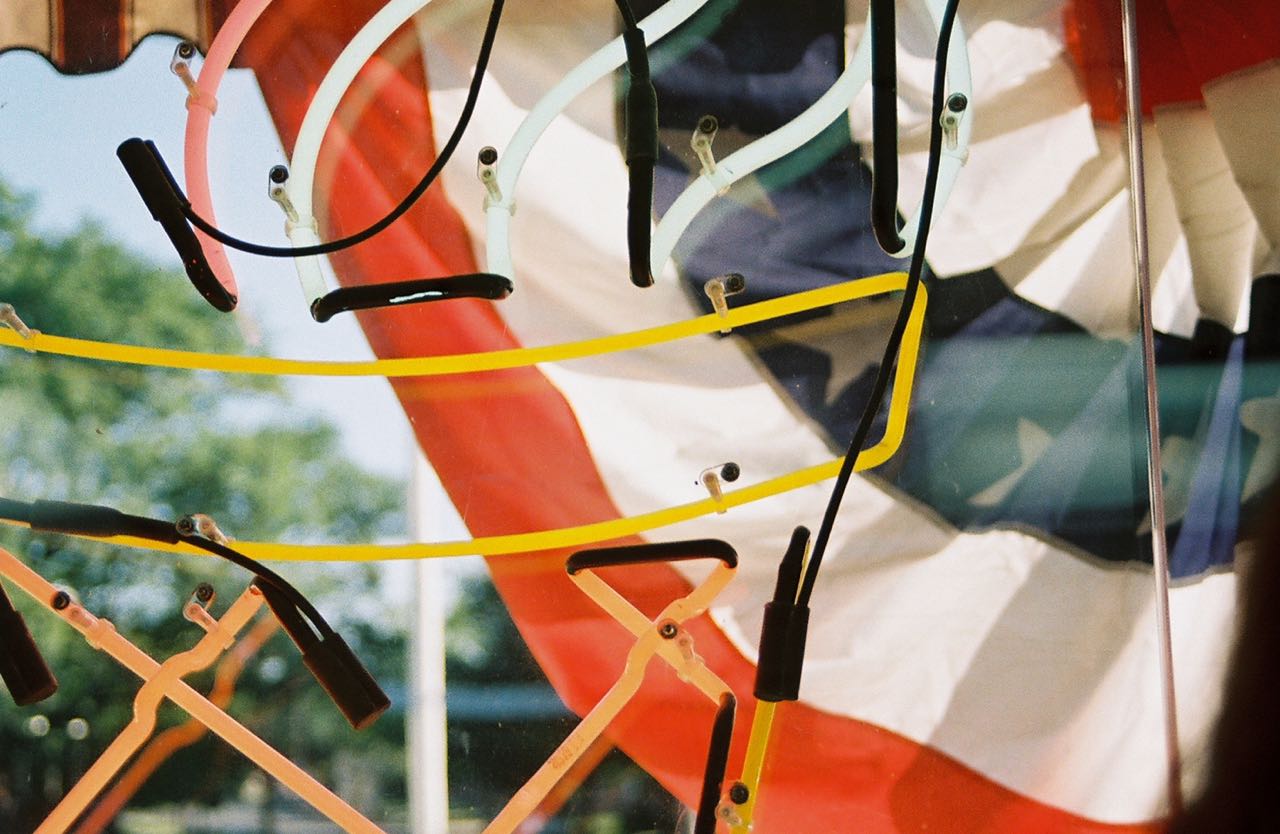
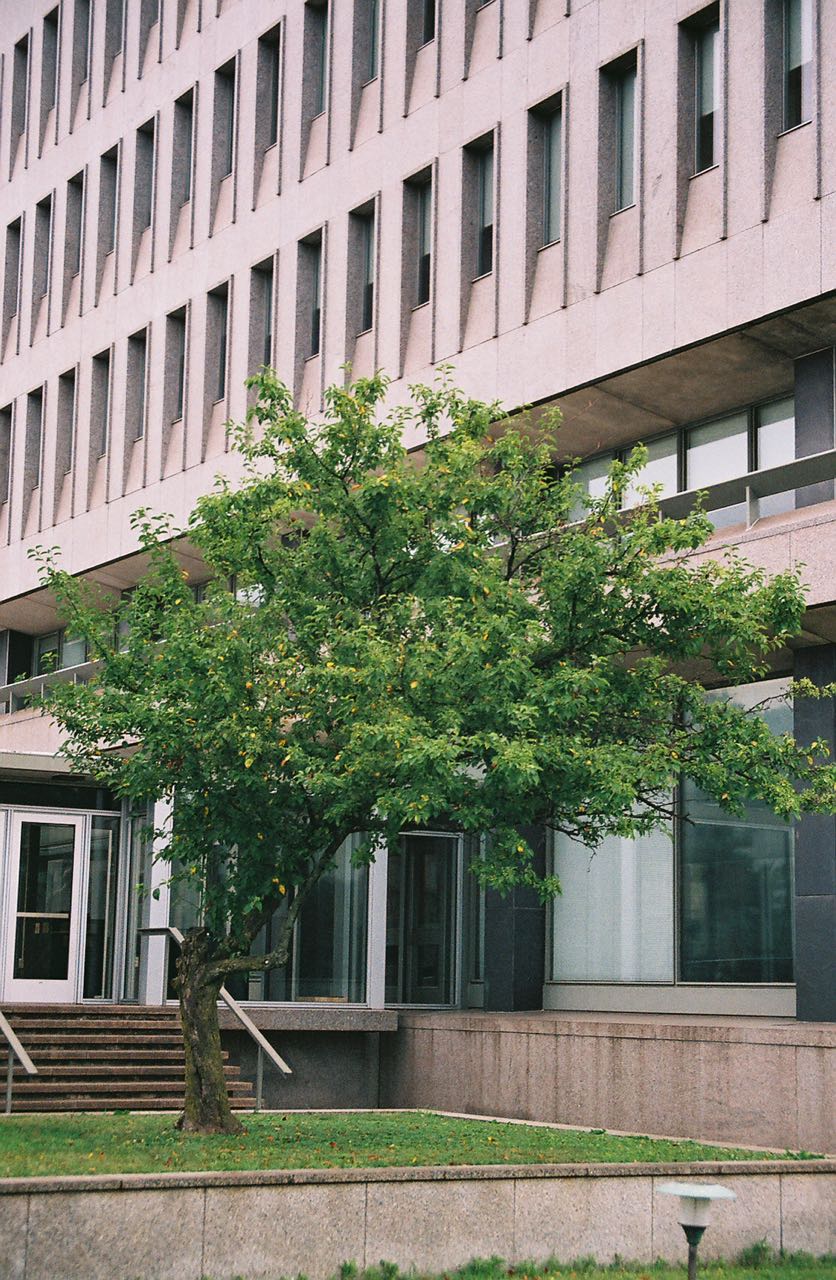
EM Resources:
- Mike Butkus’ Camera Manual page for the Nikon EM
- Ad pages from Popular Photography
- Nikon EM sales brochure page